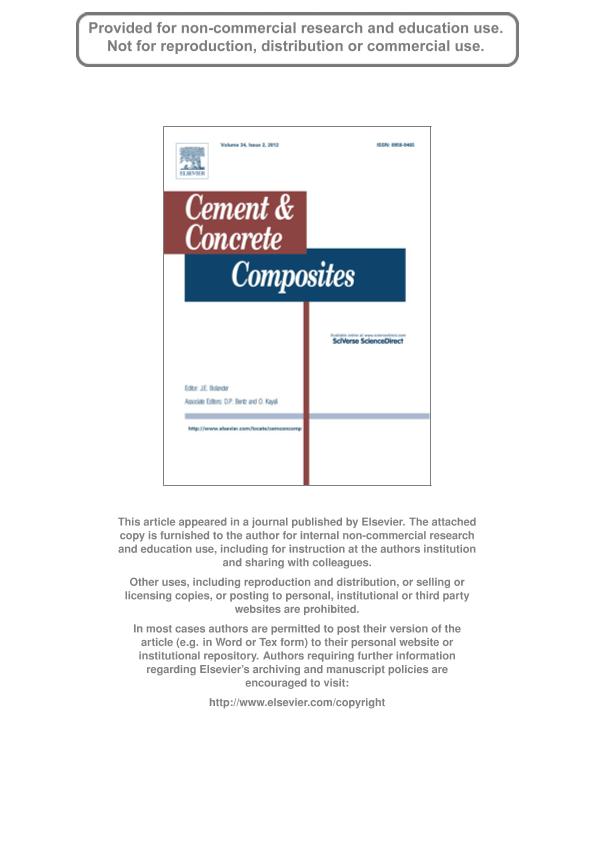Artículo
On the orientation of fibres in structural members fabricated with self compacting fibre reinforced concrete
Fecha de publicación:
02/2012
Editorial:
Elsevier
Revista:
Cement & Concrete Composites
ISSN:
0958-9465
Idioma:
Inglés
Tipo de recurso:
Artículo publicado
Clasificación temática:
Resumen
The incorporation of fibres into concrete produces important benefits, mainly on the residual load-bearing capacity. These improvements depend on the type, content and orientation of the fibres, being a strong relationship between the number of fibres in the fracture surfaces and the post peak parameters. Although the fibres could be homogeneously distributed after mixing, the casting and compaction processes can significantly affect the fibre distribution and orientation, and consequently the mechanical performance of the material. In the case of Fibre Reinforced Self Compacting Concrete (FR-SCC) the existence of significant flow and wall effects may influence fibre orientation. This paper analyzes the fibre orientation in thin structural elements cast with FR-SCC and its effects on the residual mechanical properties. A slab of 0.90 × 1.80 × 0.09 m, a wall of 0.50 × 2.00 × 0.08 m, and a beam of 0.15 × 0.15 × 2.50 m were selected as representative elements where different concrete flow conditions take place. A strong heterogeneity in the orientation of the fibres was found. The fibre orientation varied with the flow rate and with the wall effect; the thickness of the elements or the proximity to the bottom of the moulds appeared as important variables. It was demonstrated that in thin elements the residual mechanical properties can be quite different when diverse zones and/or directions of the structural elements are considered. © 2011 Elsevier Ltd. All rights reserved.
Palabras clave:
FIBRES
,
ORIENTATION
,
RESIDUAL STRENGTH
,
SELF-COMPACTING CONCRETE
Archivos asociados
Licencia
Identificadores
Colecciones
Articulos(CCT - LA PLATA)
Articulos de CTRO.CIENTIFICO TECNOL.CONICET - LA PLATA
Articulos de CTRO.CIENTIFICO TECNOL.CONICET - LA PLATA
Citación
Zerbino, Raul Luis; Tobes, Juan Manuel; Bossio, Maria Eugenia; Giaccio, Graciela Marta; On the orientation of fibres in structural members fabricated with self compacting fibre reinforced concrete; Elsevier; Cement & Concrete Composites; 34; 2; 2-2012; 191-200
Compartir
Altmétricas




